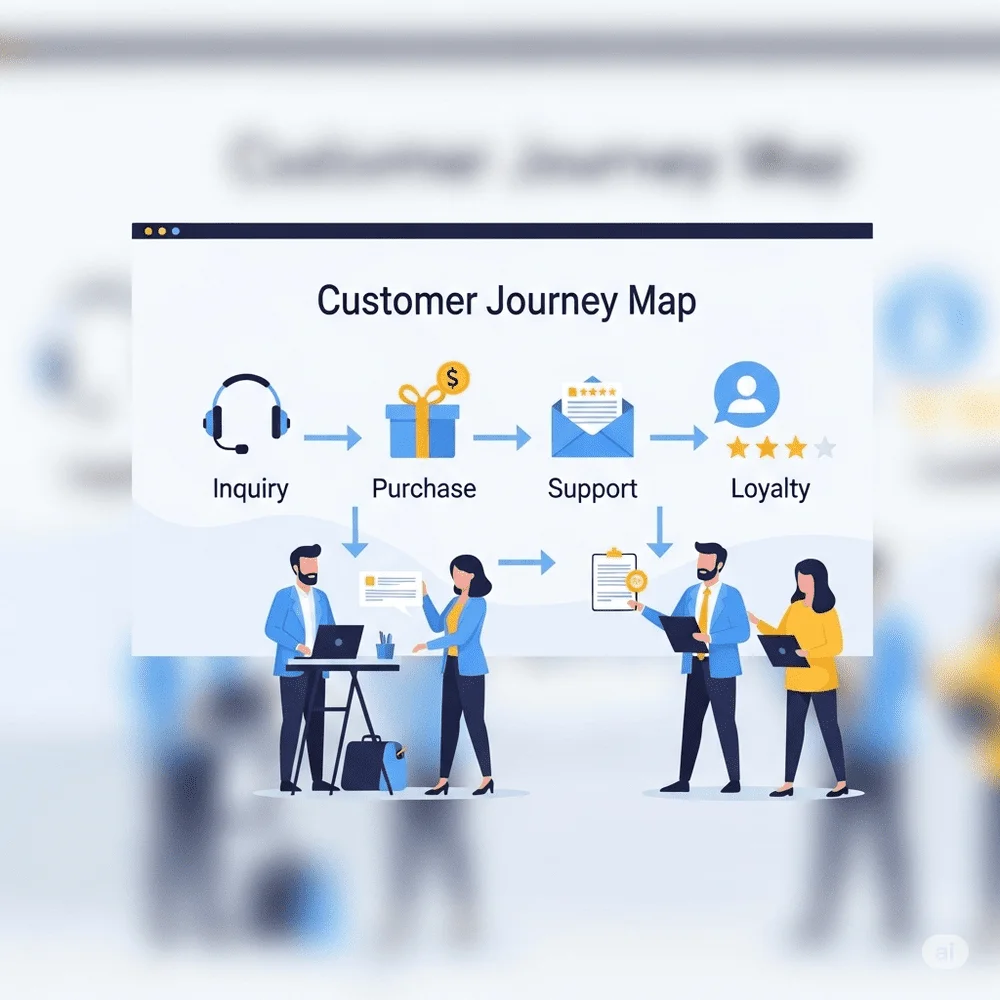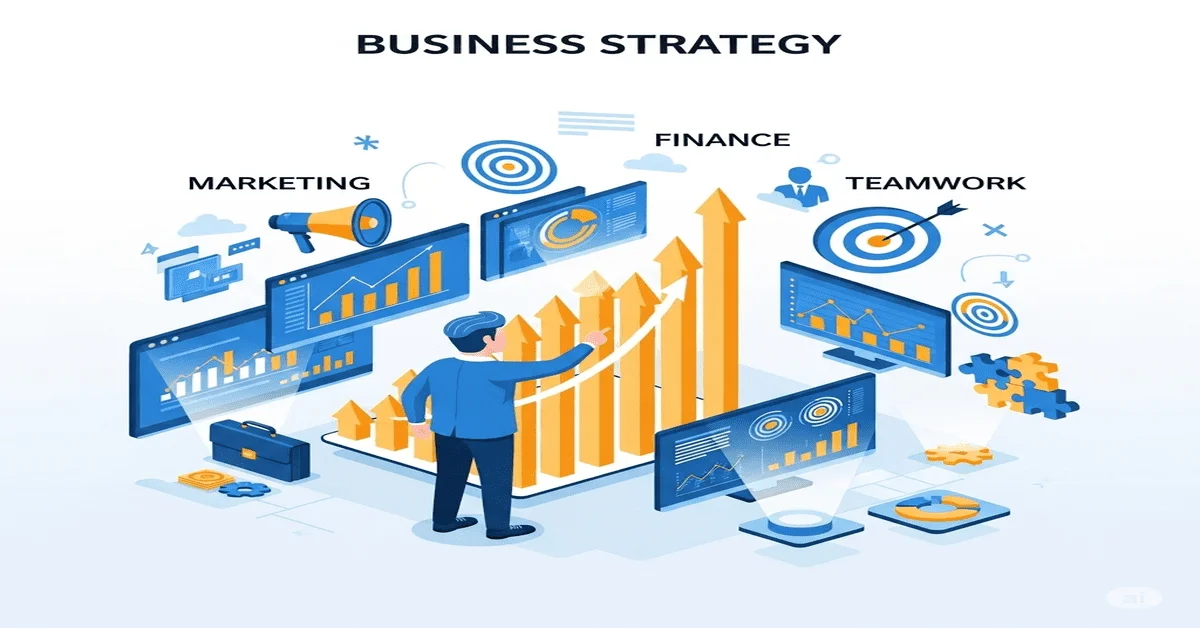In today’s fast-paced and competitive world, growing a business is more than just having a good product or service. It takes smart strategies, clear planning, and consistent action. Whether you’re a startup, a local store, or an established business, the right approach can lead to long-term success.
Why Smart Strategies Matter for Business Growth?
Smart growth isn’t about big spending or overnight success. It’s about understanding your goals, knowing your customers, using the right tools, and constantly improving. In this article, we’ll explore practical, simple, and powerful strategies that can help your business grow step by step.
1. Define Clear Business Goals
Growth begins with clarity. You must know exactly what you want to achieve.
- Do you want to increase sales, expand into new areas, or improve brand recognition?
- Are your goals short-term (6–12 months) or long-term (1–5 years)?
- Are they measurable, realistic, and time-bound?

Break large goals into smaller, achievable tasks. For example, if your target is to grow revenue by 20% in a year, decide how much monthly progress is needed. A focused path keeps you from wasting time and energy.
2. Know Your Customers Deeply
Your business exists because of your customers. To grow, you must understand their needs, challenges, and behaviors.
How to gather customer insights:
- Conduct surveys, feedback forms, or interviews
- Read customer reviews and social media comments
- Monitor website traffic and user behavior using analytics
This knowledge allows you to improve your offerings, personalize your communication, and stay ahead of competitors. Businesses that listen to customers grow faster and retain them longer.
3. Build a Strong Online Presence
Your online image is often your first impression. People search online before making buying decisions. A weak digital presence can turn away potential customers even if your product is great.
Essential components of a solid online presence:
- A mobile-friendly, fast-loading website
- Active social media accounts (Facebook, Instagram, LinkedIn, etc.)
- Google My Business listing for local visibility
- Positive customer reviews and ratings
- Regular blog posts that offer value and build trust

Even a small business can look professional and trustworthy online without a big budget.
4. Use Data to Make Smart Decisions
In the age of digital tools, guessing is risky. Analyzing data reveals what’s effective and what needs improvement.
Track and analyze:
- Sales reports and customer trends
- Website traffic using tools like Google Analytics
- Campaign performance metrics (clicks, conversions, ROI)

Basing decisions on real data rather than assumptions boosts efficiency, minimizes waste, and supports sustainable growth.
5. Improve Your Products or Services
No product is perfect forever. The best businesses evolve based on feedback and changing market needs.
Ways to improve your offerings:
- Actively collect and review customer feedback
- Add features or adjust pricing based on demand
- Focus on quality, usability, and reliability
Small improvements like better packaging, faster delivery, or easier checkout can increase satisfaction and repeat business.
6. Focus on Customer Experience
Customers remember how you treat them more than what you sell. A great experience builds loyalty and encourages word-of-mouth marketing.
Customer experience strategies:
- Respond quickly to queries and complaints
- Be polite, helpful, and professional in every interaction
- Offer loyalty rewards, thank-you notes, or follow-ups after purchase

Happy customers often become your best marketing team.
7. Empower Your Team
Your employees play a direct role in how customers experience your brand. A motivated and well-trained team leads to better service, stronger results, and faster growth.
Invest in your people:
- Provide training sessions or workshops
- Recognize good performance and offer rewards
- Encourage open communication and feedback
- Align your team with your business goals
As your team develops and improves, your business naturally progresses alongside it.
8. Use Technology to Work Smarter
Technology helps you save time, reduce errors, and improve productivity. You don’t need expensive software; many tools are free or affordable.
Useful tools include:
- Accounting tools like QuickBooks, Wave, or FreshBooks
- Email marketing tools like Mailchimp or Sender
- Project management apps like Trello, Asana, or Notion
- Social media scheduling tools like Buffer or Hootsuite
- Online payment gateways like Stripe or PayPal

These tools allow you to focus on important work while automation handles the routine.
9. Try Creative and Targeted Marketing
Marketing is about connection, not just promotion. Instead of spending more, spend smarter.
Effective, low-cost marketing strategies:
- Create helpful blog content or how-to videos
- Run giveaways or referral programs
- Use influencer collaborations or micro-partnerships
- Engage followers with polls, stories, and tips on social media
- Collect and showcase user-generated content and reviews
Always track your results. Focus more on what’s working and drop what isn’t.
10. Watch Your Competitors
Keeping an eye on the competition helps you stay ahead. You don’t need to copy them, just learn from what they’re doing well or poorly.
Competitive analysis tips:
- Study their website, pricing, and promotions
- Read their customer reviews to spot weaknesses
- Look for gaps; they’re missing, those are your opportunities
- Use tools like SEMrush, Ahrefs, or Ubersuggest to study their SEO and keywords

Staying aware helps you improve your strategies and find your unique edge.
11. Monitor Your Finances Closely
Smart financial management is the foundation of business stability. You can’t grow if your expenses outweigh your earnings.
Financial growth tips:
- Create a monthly or quarterly budget
- Track income, expenses, and profit margins
- Cut unnecessary spending
- Save for future needs or emergencies
- Invest in areas that bring high returns (e.g., marketing, team, tools)
Avoid risky spending and make sure your cash flow is always in check.
12. Stay Flexible and Keep Adapting
The business world is always changing. New trends, tools, and customer needs appear constantly. If you’re too rigid, you’ll fall behind.
Adaptation practices:
- Review your performance weekly or monthly
- Test new ideas in small ways
- Accept failure as a learning step
- Stay informed through business blogs, podcasts, and news
Being flexible and open to change is one of the most powerful strategies for long-term business success.
Final Thoughts
Growing a business takes thoughtful planning, smart choices, and ongoing effort—it’s never just a matter of luck. You don’t need a big budget, just the right business growth strategies like setting clear goals, understanding your customers, using technology wisely, building a strong team, practicing smart marketing, managing finances carefully, and staying adaptable. Apply these strategies consistently, and your business will grow steadily and successfully.
Related Topic: Grow Your Small Business Using Free Online Tools



